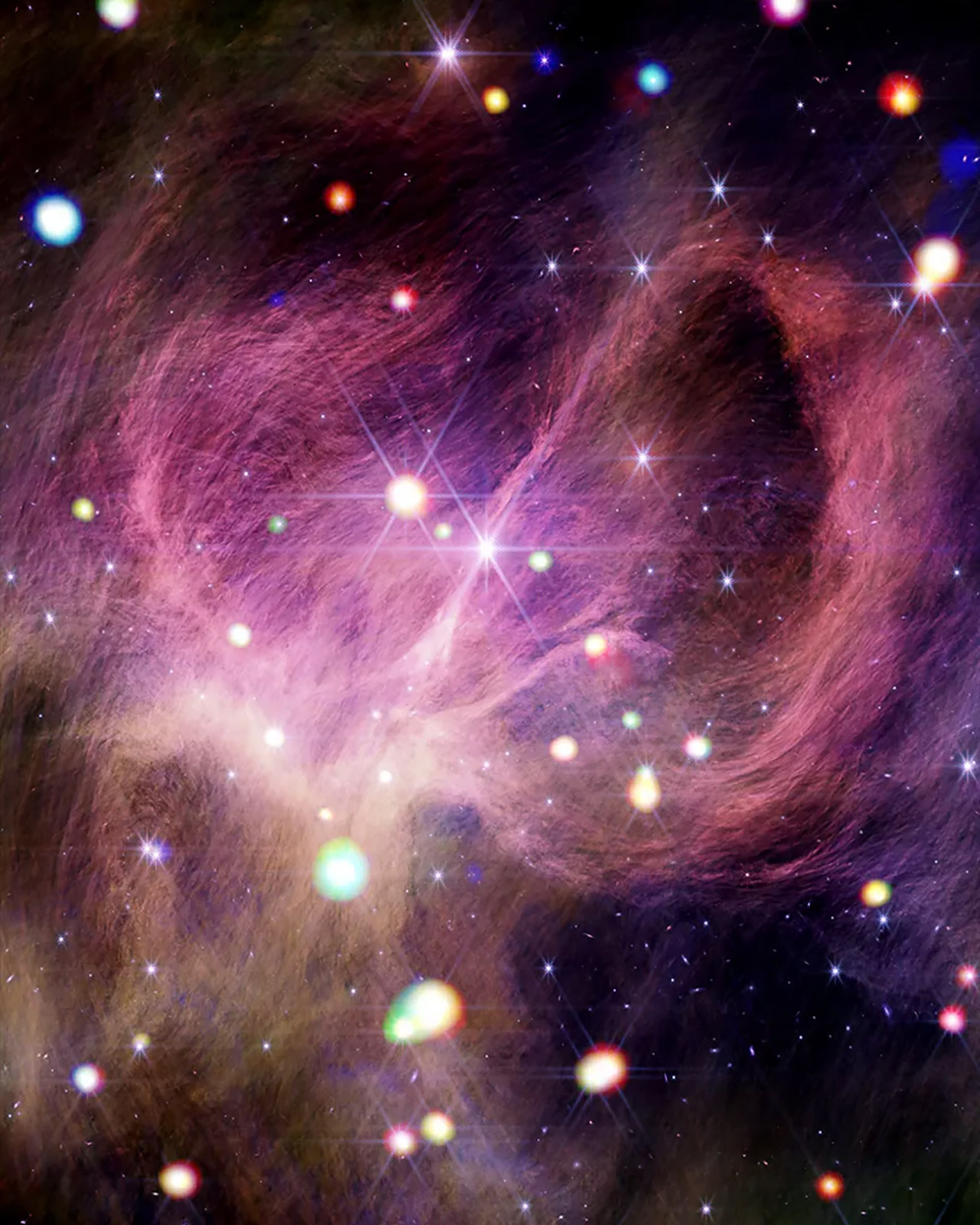A thousand light-years away, within the constellation Perseus, a cosmic nursery is buzzing with life. NASA’s James Webb House Telescope and Chandra X-ray Observatory have imaged IC 348, a star-forming area in our Milky Approach, and it’s a gorgeous image of galactic creation.
IC 348 is a small star nursery nestled in our galaxy, about half a light-year throughout. Webb’s Close to-Infrared Digital camera (NIRCam) reveals wispy filaments—interstellar materials that glows softly because it displays the sunshine of recent stars. Astronomers name these pink, orange, and purple buildings a mirrored image nebula. In contrast to nebulae that emit their very own gentle, this one is a cosmic mirror, reflecting the sunshine of the celebs inside it. This ethereal haze accommodates carbon-based chemical substances known as polycyclic fragrant hydrocarbons (PAHs) which add chemical richness to the picture and trace on the advanced supplies that can in the future seed planets.
Sale

Gskyer Telescope, 70mm Aperture 400mm AZ Mount Astronomical Refracting Telescope for Youngsters Inexperienced persons -…
- Superior Optics: 400mm(f/5.7) focal size and 70mm aperture, absolutely coated optics glass lens with excessive transmission coatings creates gorgeous pictures…
- Magnification: Include two replaceable eyepieces and one 3x Barlow lens.3x Barlow lens trebles the magnifying energy of every eyepiece. 5×24 finder…
- Wi-fi Distant: This refractor telescope consists of one good cellphone adapter and one Wi-fi digital camera distant to discover the character of the world simply…
Within the heart of this cluster, a pair of B-type stars—large, blazing giants—rule the roost. These twin stars, locked in a gravitational waltz, are IC 348’s heavyweights, their stellar winds forming a surprising loop in the precise half of the nebula. They outshine the handfuls of smaller stars scattered throughout the scene, every some extent of sunshine with its personal story of formation. Chandra’s X-ray imaginative and prescient provides one other layer by portray younger stars in crimson, inexperienced and blue. These X-rays present the high-energy tantrums of stars of their youth as they mature.

Astronomers have been finding out IC 348 for years, however Webb’s current observations have revealed one thing new: three small brown dwarfs, every a singular object. These objects are too small to ignite as stars however bigger than planets. They problem our understanding of how cosmic objects type. The smallest of the trio weighs solely three to 4 occasions Jupiter’s mass, making it one of many smallest free-floating brown dwarfs ever discovered. Discovering such light-weight objects in a cluster as younger as IC 348, which is considered just a few million years previous, calls into query the bounds of star formation. Are these dwarfs the runts of the stellar litter or do they point out utterly new mechanisms at work?

That is 1,000 light-years from Earth, a stellar nursery the place objects are nonetheless discovering their place within the universe. Brown dwarfs, fuel loops and the interplay of sunshine and matter all counsel a dynamic place the place creation is going on. Every star, dwarf and nebula tells a narrative of gravity, warmth in addition to time on a tiny and unattainable scale.
[Source]
Elevate your perspective with NextTech Information, the place innovation meets perception.
Uncover the most recent breakthroughs, get unique updates, and join with a worldwide community of future-focused thinkers.
Unlock tomorrow’s developments in the present day: learn extra, subscribe to our e-newsletter, and turn out to be a part of the NextTech neighborhood at NextTech-news.com

